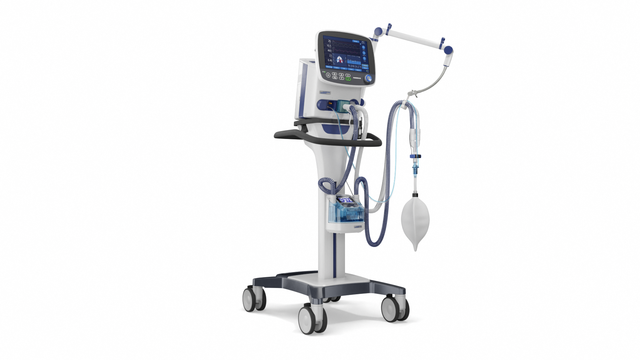
紧凑设计能力。移动高端呼吸机

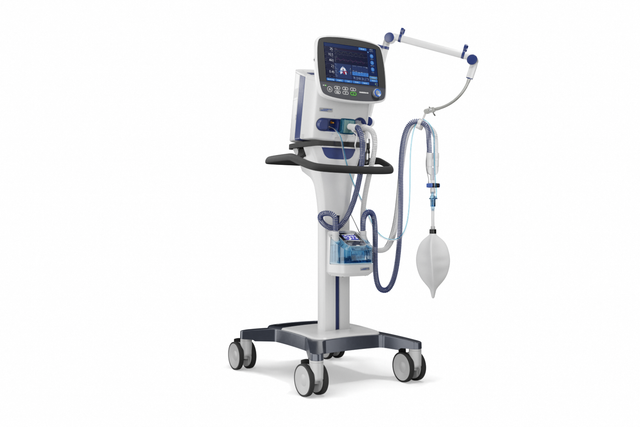
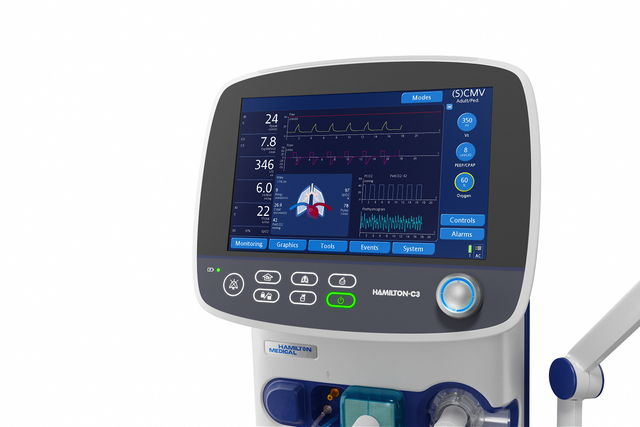
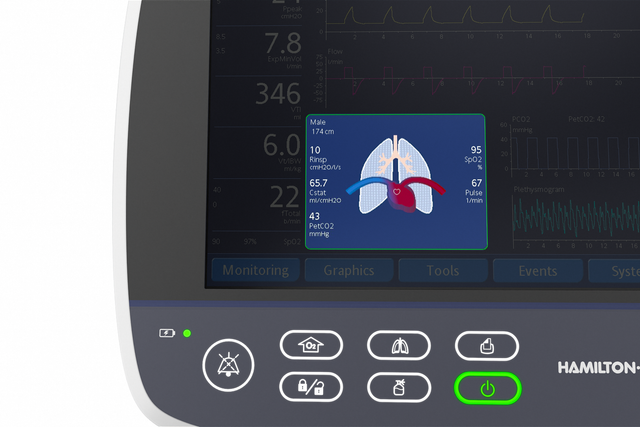
动态肺面板显示与实际呼吸同步的肺顺应性、气道阻力和病人触发。
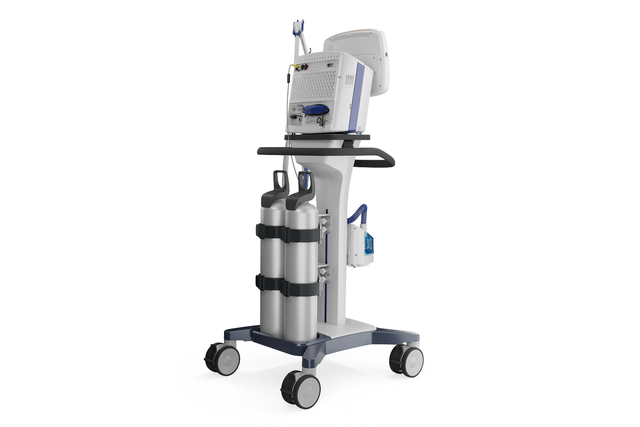
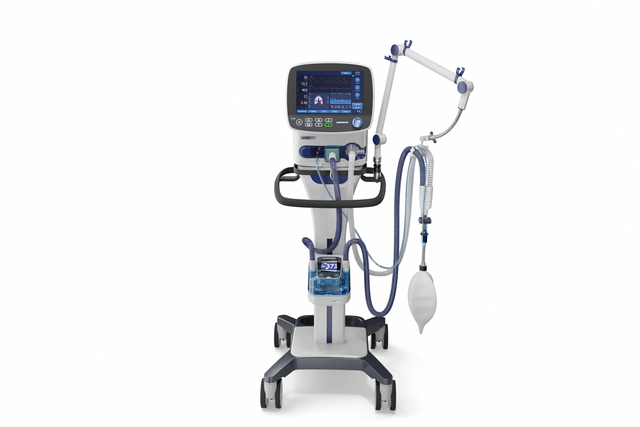
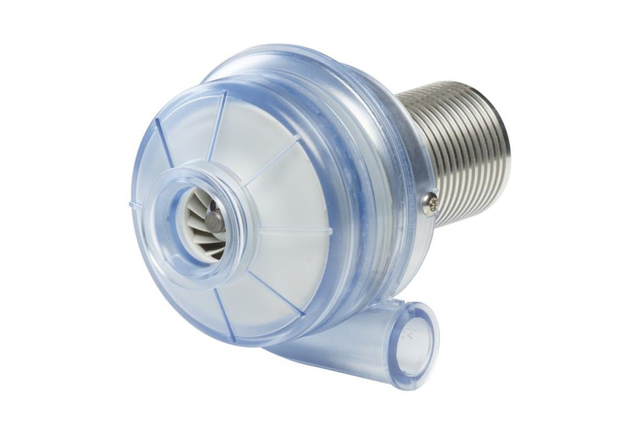
凭借高性能涡轮,HAMILTON-C3 完全独立于高压空气出口和外部压缩机。这赋予您最大的移动性,这样您可以围绕医院自由移动。
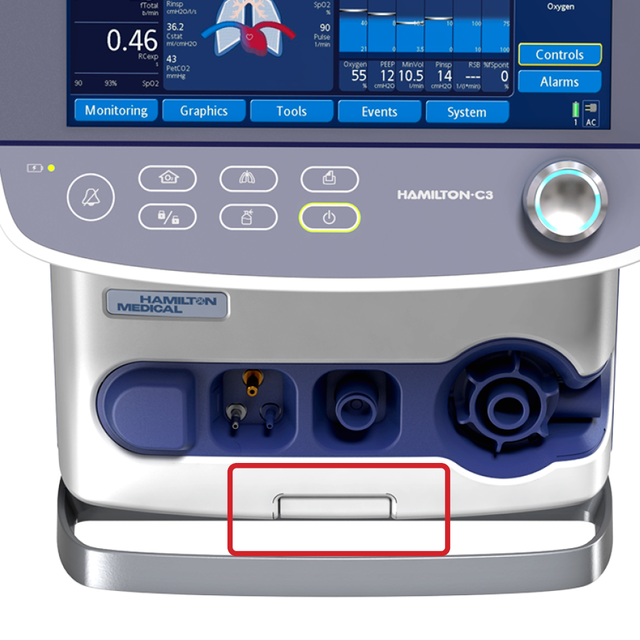
您可以将 HAMILTON-C3 安装在台车、床式底座或台架上,都很容易。无需额外工具。
只需按下按钮,从台车上释放呼吸机,然后再按一下重新连接。
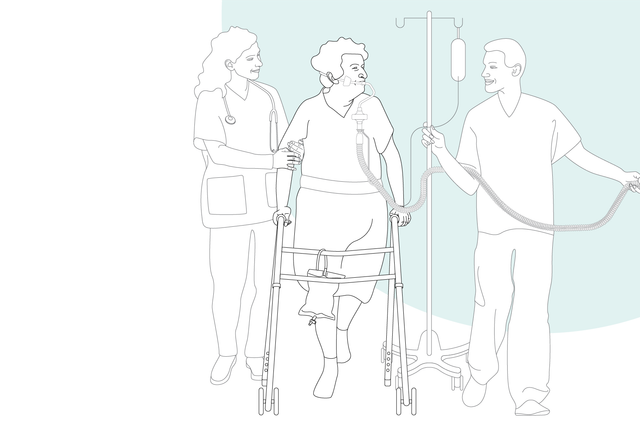
凭借高性能涡轮、电池、紧凑设计和先进的通气模式,HAMILTON-C3 还在病人旁边帮助病人期初下床活动。
从各个角度发现 HAMILTON-C3,点击热点,以了解更多信息。
| 病人组 | 成人/儿童、新生儿 |
|---|---|
| 外形尺寸(宽x深x高) | 310 x 250 x 460 mm(呼吸机主机) 560 x 640 x 1460 mm(含台车) |
| 重量 | 呼吸机主机:9.5 kg(21 磅) 呼吸机主机和台车:37 kg(81.6 lb) |
| 监视器尺寸和分辨率 | 307.3 mm(12.1 英寸)对角线 1280 x 800 像素 |
| 可拆卸式监视器 | |
| 电池运行时间 | 一块电池 2.4 小时 两块电池 5 小时 |
| 热插拔电池 | |
| 气源 | 集成涡轮 |
| O2 接头 | DISS (CGA 1240) 或 NIST |
| 连接 | COM 端口,护士呼叫器(可选) |
| 音量 | 43 dB(在正常运行情况下) |
| 容量控制、流量控制 | |
|---|---|
| 定量、适应性压力控制 | |
| 智能通气 | ASV®、INTELLiVENT-ASV®(选项) |
| 无创通气 | |
| 高流量 | |
| 肺力学指标可视化(动态肺) | |
|---|---|
| 病人呼吸机依赖性可视化 | |
| 食道压测量 | |
| 二氧化碳图 | |
| 氧饱和度监测 |
| 肺复张性评估和肺复张 (P/V Tool Pro) | |
|---|---|
| 人机同步 (IntelliSync+) | |
| CPR 通气 | |
| Hamilton Connect 模块 |
| 远程连接至 HAMILTON-H900 湿化器 | |
|---|---|
| 集成 IntelliCuff 气囊压力控制器 | |
| 集成气动雾化器 | |
| 集成 Aerogen 雾化器 | |
| 与 Sedaconda ACD-S 麻醉剂输送系统的兼容性 |
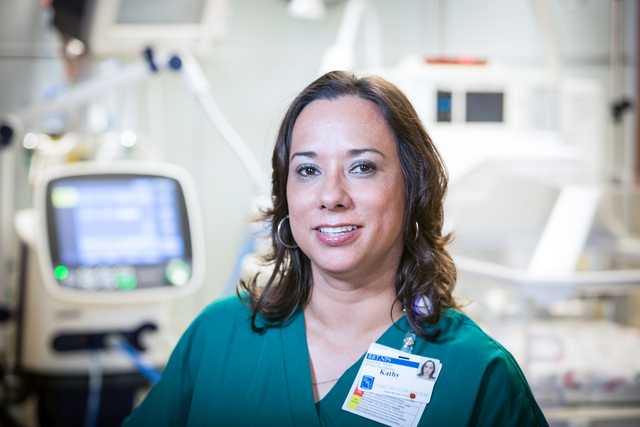
HAMILTON-C3 是一款完全可移动的呼吸机。身体虚弱的病人在前往手术室的过程中可以一直使用同一台呼吸机。
新生儿和儿童教育协调员
美国德克萨斯州拉伯克大学医疗中心
根据病人的肺力学指标和呼吸用力,ASV 通气模式每天 24 时从插管到拔管连续调整每次呼吸时的呼吸频率、潮气量和吸气时间。
INTELLiVENT-ASV 智能通气模式持续调整病人的通气和氧合状态。
它根据临床医生设定的目标值和病人的生理输入设置分钟通气量、PEEP 和氧浓度。
您可以使用 P/V Tool 评估肺复张性和确定肺复张策略。
此外,您也可将其用于进行持续充气肺复张操作和测量肺容量的增加。
集成气动雾化器完全与吸气和呼气时间同步。
集成同步 Aerogen 雾化系统作为一个选配件提供 (
输送药物气溶胶粒子的细水雾有助于您恢复支气管痉挛、提高通气效率和减少高碳酸血症 (
高流量鼻导管治疗(
近端流速和二氧化碳测量使我们的呼吸机能生成最新的容积二氧化碳图,为评估通气质量和新陈代谢活动提供生要依据。
通气状态面板显示与病人的呼吸机依赖性相关的六个参数,包括氧合状态、CO2 清除状态和病人活动。
各栏中上下移动的浮动指示器显示给定参数的当前值。
快速撤机是 INTELLiVENT-ASV 模式的一个功能,其可提供对病人状况的持续动态监测和控制,从而评估病人是否适于拔管。
自动自主呼吸试验 (SBT) 是 INTELLiVENT-ASV 模式中快速撤机功能的一部分,并为您提供执行全控型 SBT 的选项。
动态肺面板向您显示下列重要监测数据的实时图表视图:
呼吸机可根据所选的监测参数组合显示动态环图。有了趋势图功能,您可以看到针对您选择的监测参数和时间框所显示的趋势数据。
设备持续将监测参数保存在其存储器中,即使在待机时也不停止。
氧饱和度选项提供集成无创氧饱和度测量,数据方便地显示在您的呼吸机上。
我们还提供氧饱和度传感器的全面组合方案。
无创通气模式提供压力支持流速切换的自主呼吸(NIV 和 NIV-ST 模式)和压力控制时间切换的指令呼吸 (NIV-ST)。
与使用压缩空气的呼吸机相比,我们的涡轮驱动呼吸机能够提供更高的峰值流量。这就保证了即便漏气严重也具有最佳性能。
nCPAP 模式的设计使您仅需设置期望的持续气道正压。之后,根据病人状况和潜在漏气调整流速。这就防止了意外峰值压力的产生,保证了高效的漏气补偿,并帮助减少了氧气消耗。由于压力测量灵敏度很高,流速的调整非常迅速。
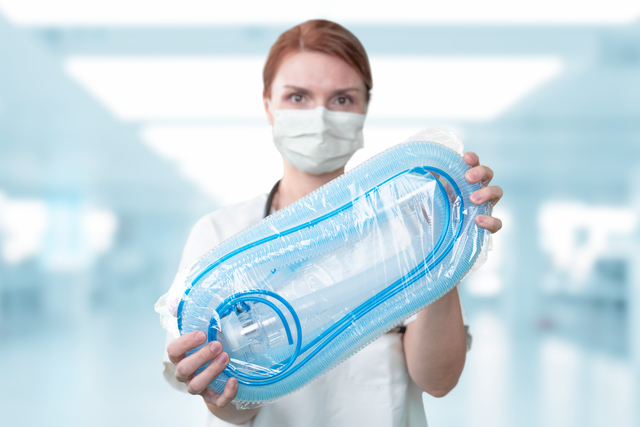
我们预组装的呼吸装置包括操作呼吸机所需的基本耗材,而且方便地放在一个包装袋中。
我们的所有基本耗材都专门为保证制造商质量的 Hamilton Medical 哈美顿医疗公司呼吸机开发。

为管理通气,您通常需要设置多个参数,例如,压力、容量、吸气和呼气触发、气囊压力等。每次您的病人状况改变时,您需要进行一次或多次调节。
为简化此过程和减少人工操作,我们创建了一系列解决方案:
适应性支持通气 (ASV) 是一种根据病人的肺力学指标和呼吸用力连续适应呼吸频率、潮气量和吸气时间的通气模式。研究表明,ASV 可缩短各种人群的机械通气时间,而且手动设置更少 (
气囊压力管理的常规解决方案需要您手动监测和调节气囊压力。
IntelliCuff 通过连续测量和自动维持所设置的成人、儿童和新生儿病人的气囊压力,安全管理病人的气道 (
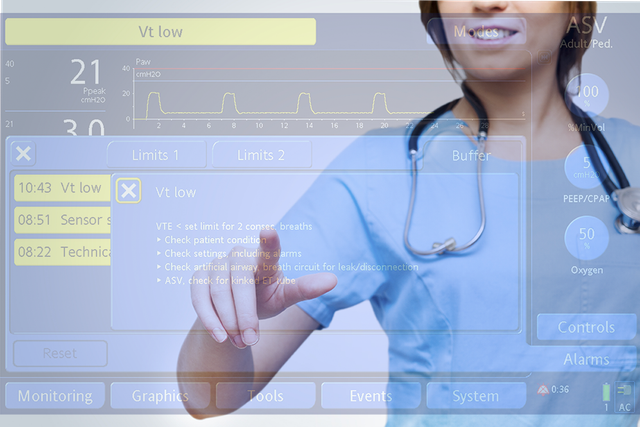
无论何时出现问题,呼吸机都会利用报警灯、声音和信息栏警示您。
屏幕上的帮助内容向您提供有关如何解决报警的建议。

我们希望我们的呼吸机尽可能快速与病人脱离。因此我们向您提供工具帮助您实施您的撤机方案。
其中包括旨在鼓励自主呼吸的可视帮助和通气模式。
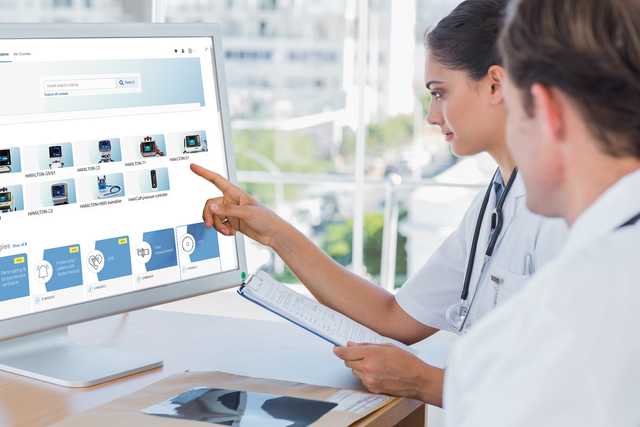

我们不断努力进一步革新我们的产品。添加新的功能和改善现有功能,以确保您在您的呼吸机寿命期间始终拥有最新的通气技术。


无论用于 ICU、MRI 科室或病人转运,所有 Hamilton Medical 哈美顿医疗公司呼吸机的用户界面操作方式均相同。
我们的通气酷屏将复杂的数据集成到直观的可视化图像。
我们围绕最高病人安全性和易用性开发我们的附件。我们尽可能将附件集成到我们的呼吸机,以简化整个呼吸机系统的操作。

我们的通气极客团队很乐意帮助您选择最适合您临床护理环境的通气设备,并帮助您实现治疗目标。获取个性化报价或安排电话回访,了解更多信息。